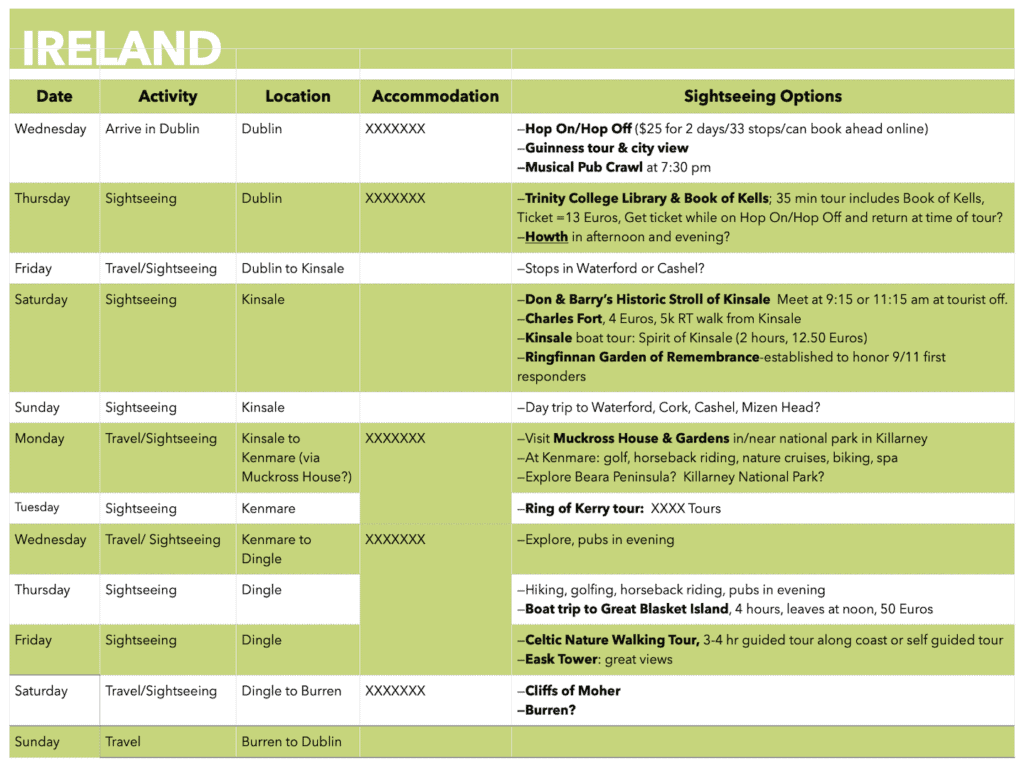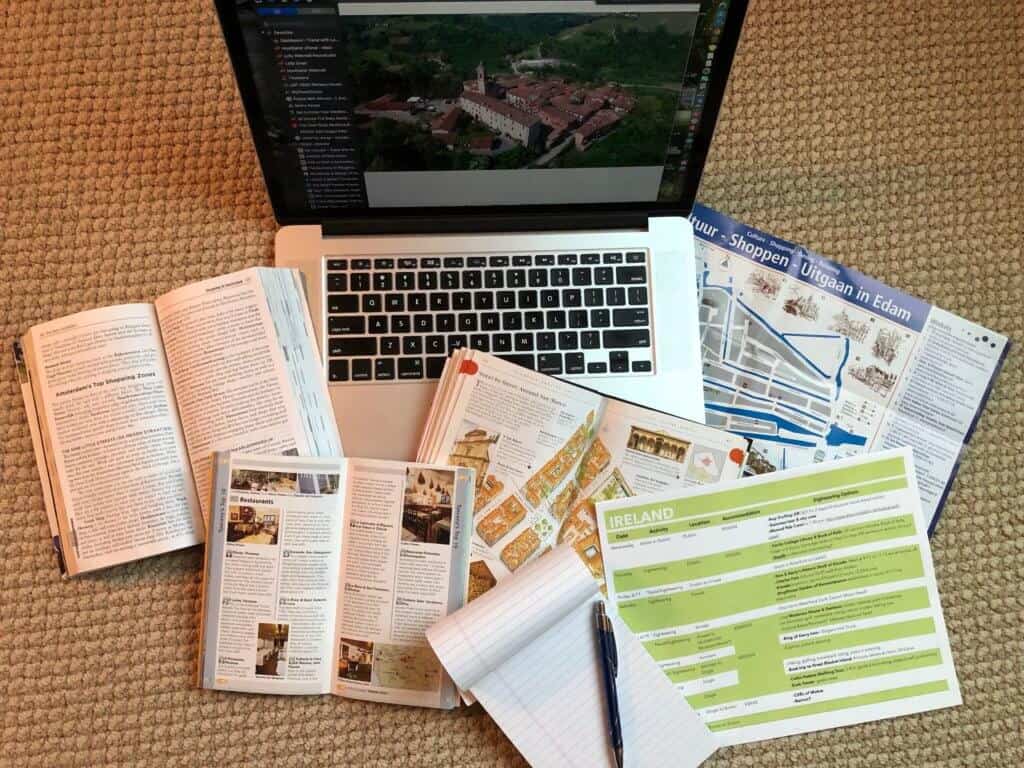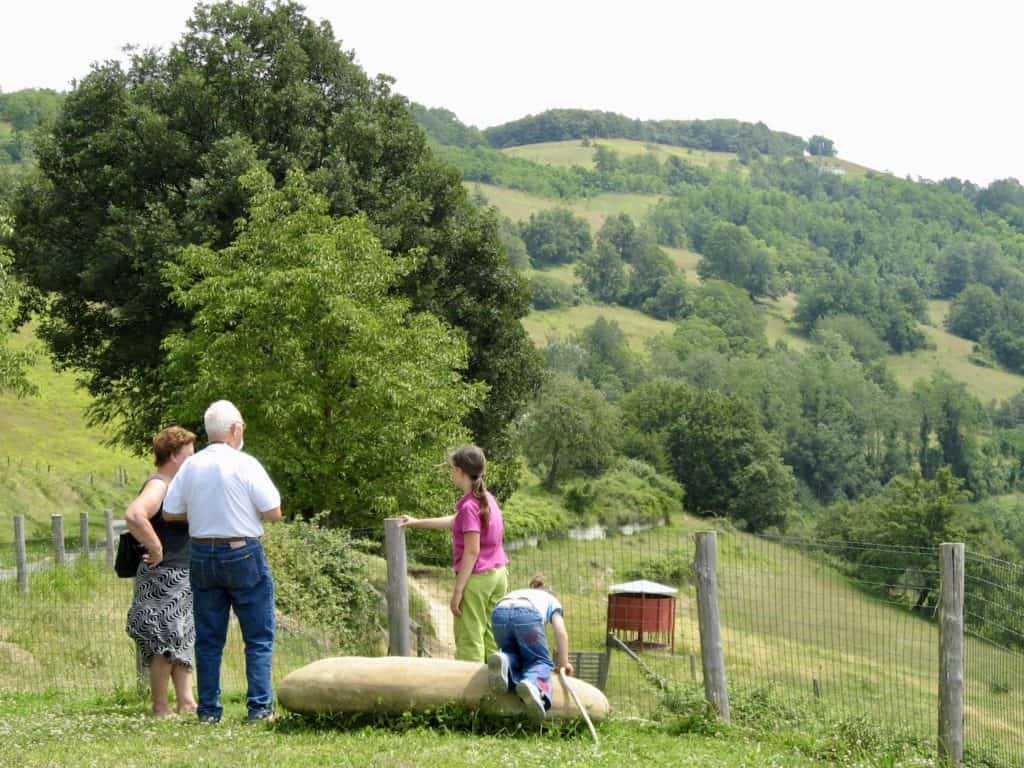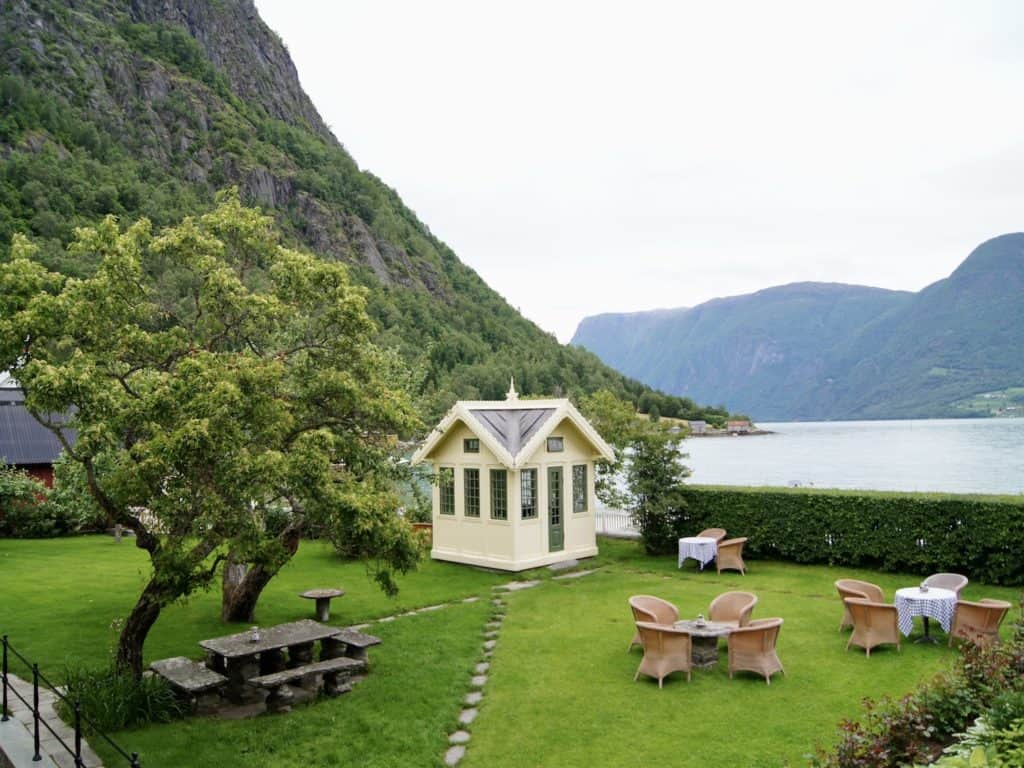Want to enjoy the freedom to explore quaint European towns, countryside vineyards, and hidden restaurant gems? The best way to do that is to rent a car and do your own driving. Driving in Europe as a tourist can enhance your vacation experience, but it comes with some differences from driving at home. Some changes are obvious, like driving in a country that speaks a different language. Or maybe you’ll be driving on the other side of the road than you’re accustomed to. Whatever the differences, there are some commonalities to driving in Europe. Follow these driving tips, and you’re on your way to a unique travel experience.
My husband and I always rent a car when traveling on our own. We value the flexibility it gives us. This article details the top tips to ensure a smooth European driving experience. Plus, my husband has added his thoughts on driving in country-specific driving conditions. We wish you a fun adventure exploring on four wheels! To help you find a rental car, read our 10 tips for renting a car in Europe. And, if you’re heading to Greece, read our driving tips just for Greece.
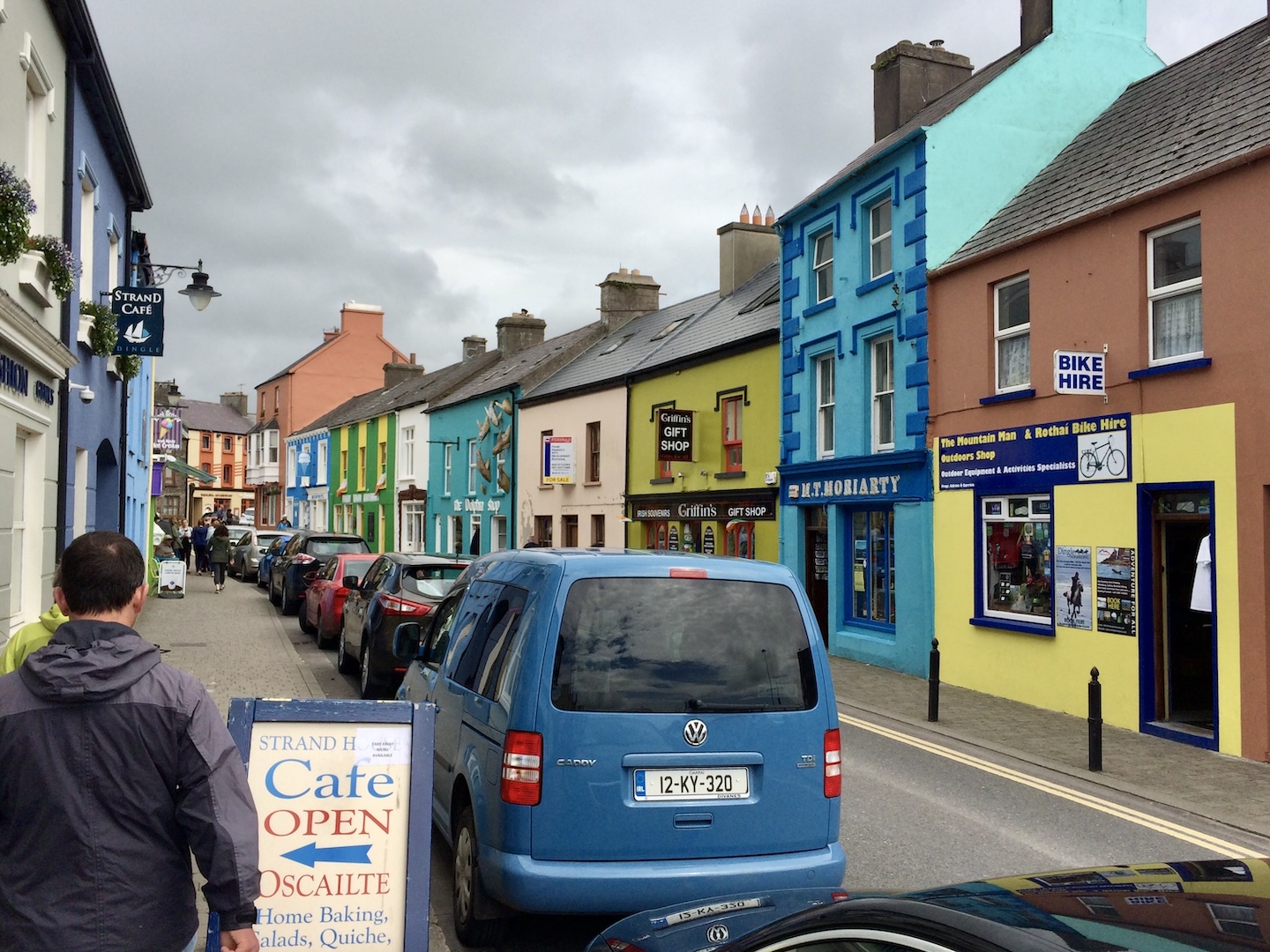
1. Plan Ahead
- Plan to obtain an International Driver’s Permit. Many European nations and/or car rental companies require you to have an International Driver’s Permit (IDP) when renting a car. Check online to see if the country you’re visiting requires one. Keep in mind that you may not be required to show one while driving, but if there is a driving-related issue, such as an accident, the police often require you to show your IDP. It is inexpensive and well worth having before heading on your trip. If American, apply online and mail or visit a AAA office to complete the process. You’ll need your U.S. passport, two passport pictures, and $20.
- When renting a car in Europe, manual transmission vehicles are very common. Automatic transmission rental vehicles are in lower supply, so reserve yours early – and expect them to be more expensive than manual transmission vehicles.
- Roundabouts are prevalent in Europe.
- Plan your driving route before your trip and share your itinerary with trusted family or friends.
- Check with your hotel, B&B, or short-term rental host to learn of any restrictions on driving and parking near your lodging. Some ancient cities have restrictions on vehicular traffic.
- Expect to see plenty of bicycles, scooters, and motorcycles in Europe, so keep your eyes open for them!
- Plan to have cash on hand for paying tolls (unless your rental car has a transponder for going through toll plazas).
- If your first European destination is a small medieval town, you may not need to rent a car until you plan to leave the city. This may alleviate a lot of stress. You could take a taxi or ride-share from the airport or train station to your lodging and only rent a car when needing to drive beyond the city.
- Expect to drive on the left side of the road in the Channel Islands, Ireland, Malta, and the United Kingdom.
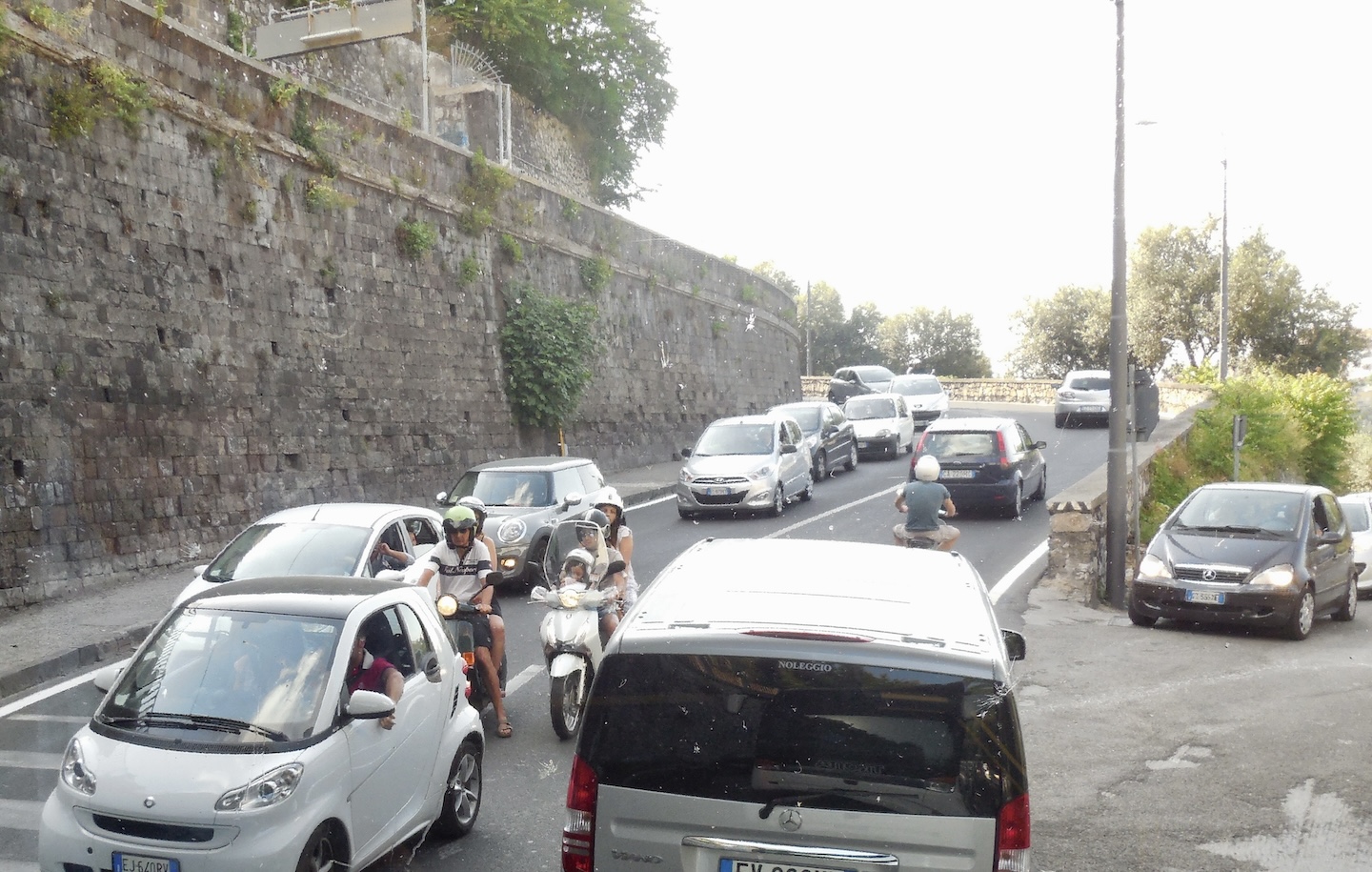
2. Learn the General Driving Rules
Every country has its own driving regulations, but general rules of the road are listed below. Check with your car rental company about a list of driving rules and tips as well as a page showing local traffic signs (if available).
- Seat belts are usually mandatory.
- Using headlights at all times is usually required or strongly suggested. It’s a good practice to use headlights, even if they’re not mandated, to make sure other drivers notice your presence on the road.
- Handheld cell phones are usually forbidden while driving.
- Right turns at red lights are usually not allowed – unless a sign indicates that is permissible.
- Ask about right-of-way conventions. Unlike in the U.S., drivers in some European countries who enter intersections on the right have priority over those on the left.
- Some old city centers have limited traffic zones (for example, in Italy, they’re called ZTL or Zona Traffico Limitato. Traffic signs with a white circle ringed with red indicated it’s a traffic area that non-residents are not to enter while driving.) If your car gets caught by a traffic camera in one of these areas, a fine will come your way — in some cases, months after you return home.
- Remember that Europe uses the metric system. Thus, mileage is measured, and speed signs are posted in kilometers (six-tenths of a mile). So, 100 kilometers per hour translates to 60 mph.
- Confirm the fuel your vehicle requires. If driving a gas-powered vehicle, remember that the cost is in local currency per liter (about one-quarter of a gallon).
3. Consider Parking Issues
- As mentioned, check about parking restrictions in old European cities ahead of time. Some have restricted zones.
- Check with your car rental company about parking rules, in general. Some countries use specially painted curbs to let drivers know if it’s a free or paid parking area – or if parking is prohibited altogether.
- Download the EasyPark app that is widely used in Europe. With the app, you can easily pay for parking without cash (as your credit card will be charged for the amount due).
- Take a picture on your smartphone of your rental car where it is parked. This might make it easier for you – or a kind local if you’re really lost – to find it later.
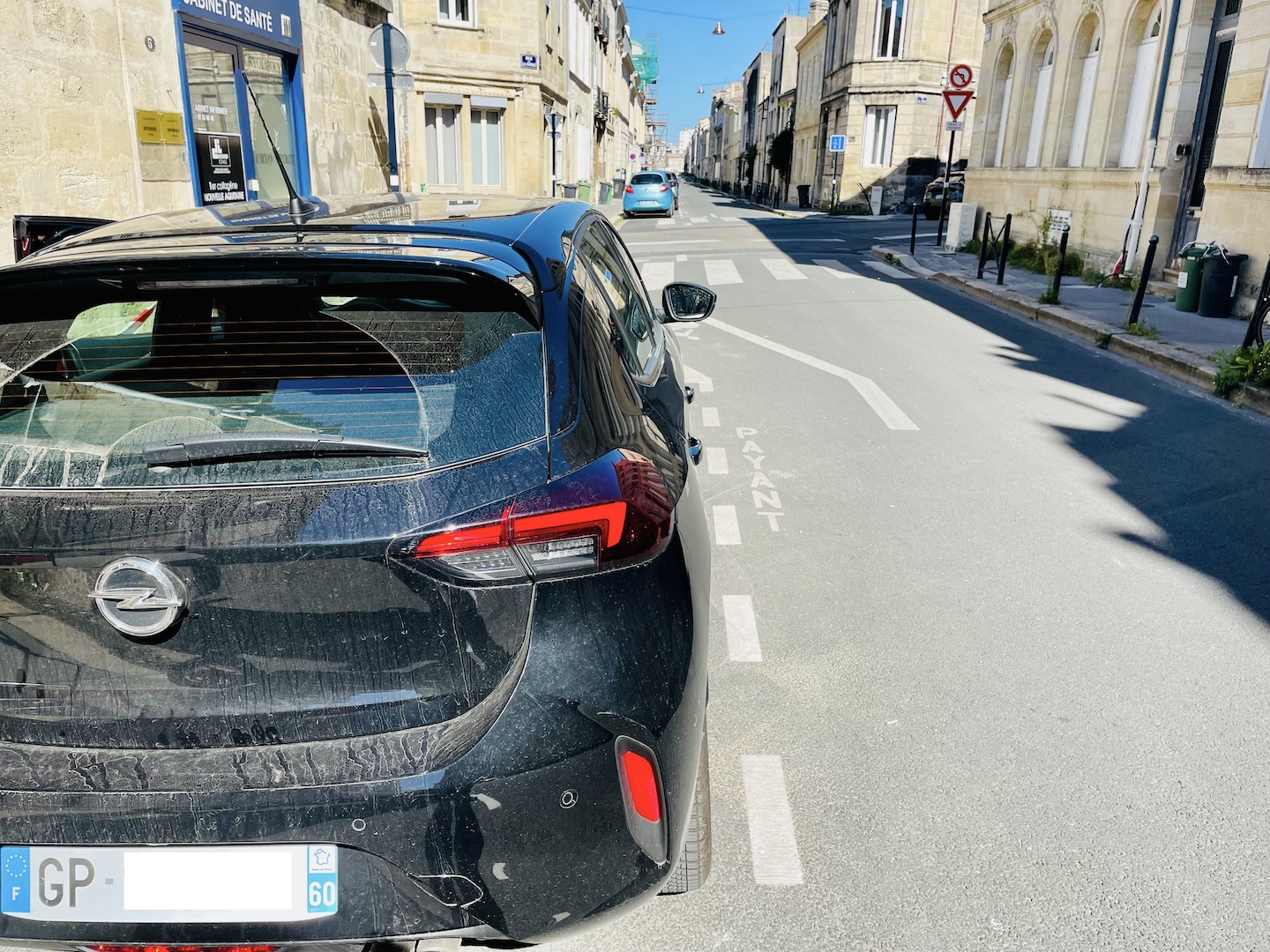
4. Be Safe
- Keep the windows up and the doors locked when leaving the vehicle. Do the same anytime you get out of the car – to change a tire, for instance.
- Take any valuables with you when exiting the car. Hide anything that you need to keep in your car. A sedan with a trunk is perfect for keeping your belongings out of sight.
- Try not to park at night in dimly illuminated areas.
5. Pack Your Patience!
Wherever you drive, you’re going to need some patience. For example, you’ll need to orient yourself to a new car and its unique characteristics after renting a car. Also, you will likely encounter many bicycles, scooters, and motorcycles while driving in Europe. That alone requires more attentiveness to your surroundings. Also, local drivers familiar with the area may become impatient with visitors driving in a new environment, and as a result, you might hear a horn honking at you.
Unique European Driving Scenarios
My husband, Pop, wrote the following reflections on his vast experience driving in Europe. Typically, he’s the driver, and I’m in charge of navigating (with help from GPS apps) and interpreting traffic signs.
In a broad sense, five broad criteria describe driving scenarios in Europe:
Driving in the British Isles
For those who have grown up driving on the right side of the road, driving on the other side takes some adjustment. Over decades of traveling to parts of the world on business where driving on the left is commonplace, I have opted for experienced drivers to drive me. However, there have been times when the keys fell into my lap or Lolly and I traveled together. I have two basic suggestions for left-side driving beginners. First, avoid stressful driving situations like heavy traffic, narrow country roads, and roundabouts initially. Second, go slow and give yourself time to get the hang of it.
Irish Driving Adventure
After several years away from left-side driving, Lolly and I visited the Republic of Ireland with friends. As men will do, once we signed out our rental car at the Dublin airport, Joe (not his real name) and I instinctively took the front seats (as pilot and navigator/co-pilot). I was the driver, and Joe was the navigator/co-pilot. We made good progress to our first stop once we were out of the airport and through the roundabout situation. Unfortunately, the road started to narrow, and simultaneously, the trucks seemed to get larger.
As one particularly large truck approached us on my right (remember, I am used to them approaching on my left), I scooted the car, I thought, slightly more to the left. Suddenly, Joe squealed and jumped toward my side of the front seating area. I guess I got a bit too close to the left edge of the road and its associated road signs, hedges, and other impediments. If the front had been a bench seat rather than bucket seats with a middle console and gear shift, I think Joe would have ended up in my lap. So, please try to avoid stressful driving situations in the beginning. Go slow to give yourself time to get the hang of left-side driving.
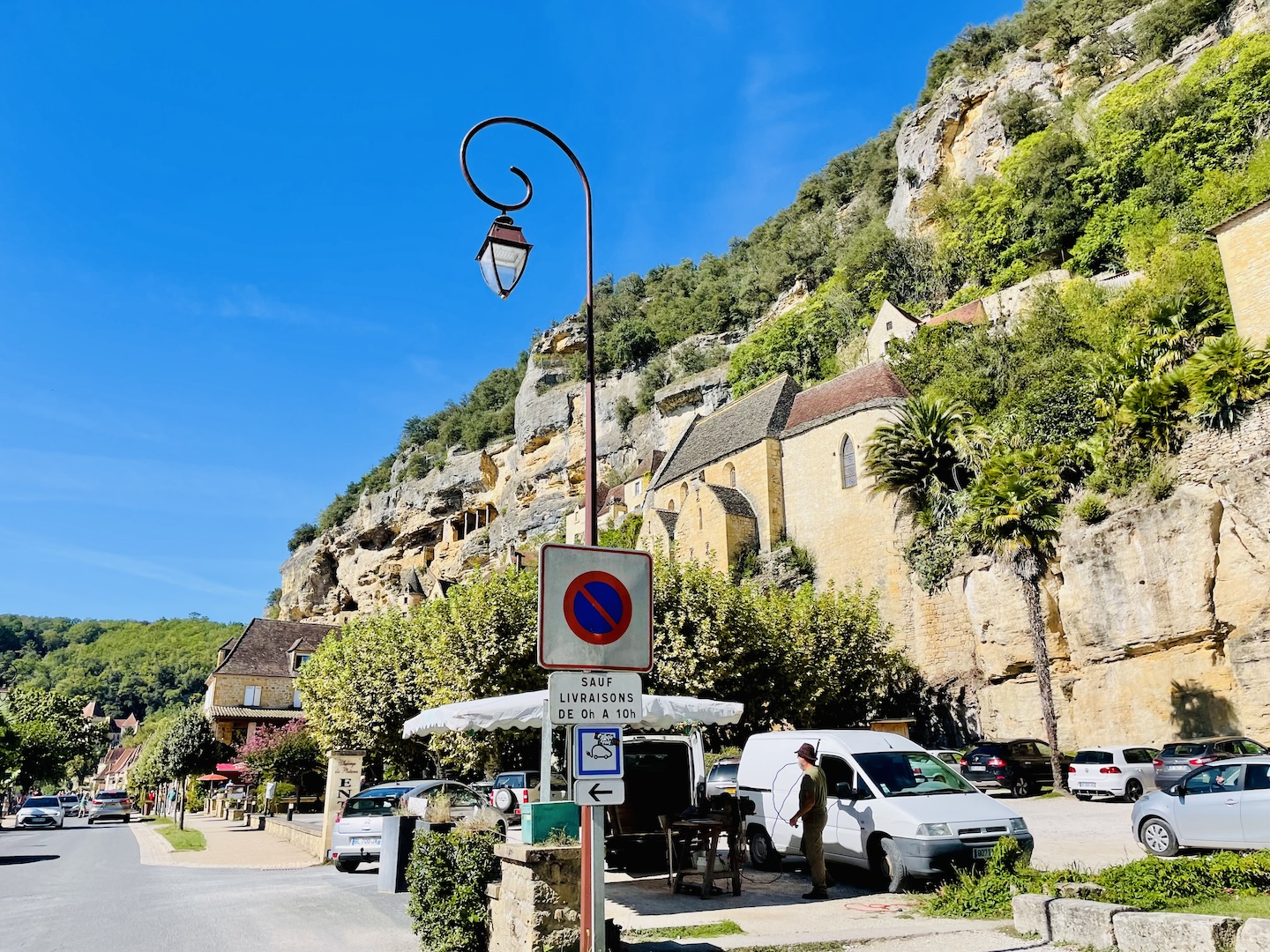
Driving on European Motorways
Generally, motorways are not much different from North American highways, with some exceptions.
- Many motorways enforce speed limits with automated systems composed of radar, a camera, and a computer system. This system automatically sends you the ticket and fine. So, be aware.
- I think Europe has more toll roads per capita than North America. So, be prepared to stop and figure out how much you owe (not always as simple as you might think). Also, you might want to check with your rental car company regarding EZ PASS-like options to bypass having to stop and pay the tolls.
- There are German autobahns. I still understand that once you are in rural areas of Germany, there are no speed limits on autobahns. So, here are a few basic suggestions from this amateur autobahn driver. The left lane is reserved for passing. I have been told that if you loiter in the left lane, it is considered unsafe driving, and you risk a ticket and fine. This is particularly important in the no-speed limit rural areas since this is where the speed demons seem to reside. So, if you are a mere mortal on a stretch of the no-speed limit autobahn and want to pass someone, carefully check your mirrors for anyone in the left lane. Look not just a few car lengths behind you, but I suggest as far as you can see. My rule, use it at your own risk, is to only venture into the left lane when I do not see anyone in the left lane for as far as I can see in my mirrors. Why? Early on, as an autobahn driver, I thought the guy in the left lane behind me was well back. I had plenty of time to pass the car in front of me. I proceeded to move into the left lane. It seemed like the guy way back in the left lane was instantly on my back bumper, flashing his high beams at me. Remember, the speed demons reside in the left lane and will be on your backside immediately if you aren’t careful. Again, I understand that passing in the right lane is verboten. Don’t forget about motorcycles.
- There are the Italian motorways. From my perspective, they are not as challenging as advertised. Yes, there are speed demons there … the aspiring Marios. So, be careful.
Driving in Modern European Cities
Urban/modern European roads are similar to North America, with a few well-known exceptions, like Rome and Naples. As with traveling anywhere, having a navigator/co-pilot in areas where English is not the language helps with road signs, street signs, etc. This can be even more important if you are facing a different alphabet. GPS-powered navigation systems (Google Maps, Apple Maps, Waze, etc.) are a must.
I suggest you also try your best to learn the basic traffic regulations. For example, Lolly and I were in Lausanne, Switzerland, and we quickly discovered, to our surprise, that when pedestrians step off the curb in front of you, regardless of location, you must stop your vehicle and let them cross the street. For those of us who have spent time driving in large American cities, this was eye-opening, to say the least.
Driving in Medieval European Cities
I have only one word for driving in medieval European cities … NARROW. Keep this in mind when renting a car. Smaller cars are often a better bet for navigating European roads.
For example, Lolly and I were in Arles (a wonderful walled medieval town in Provence, France). I dropped her off at the hotel (which was within the medieval city walls) and went off with the rental car to find the “parking garage” (which was also within the medieval city walls). OMG!! It seemed like each street became narrower and was one way in the wrong direction. After five or ten minutes, I became frustrated with what seemed to become an automotive maze. Five or ten minutes later, I was about to abandon the car. Fortunately, I was able to claw my way to the parking garage only to find that it was an urban medieval parking garage — very claustrophobic. I would not be surprised if it was once a medieval stable.
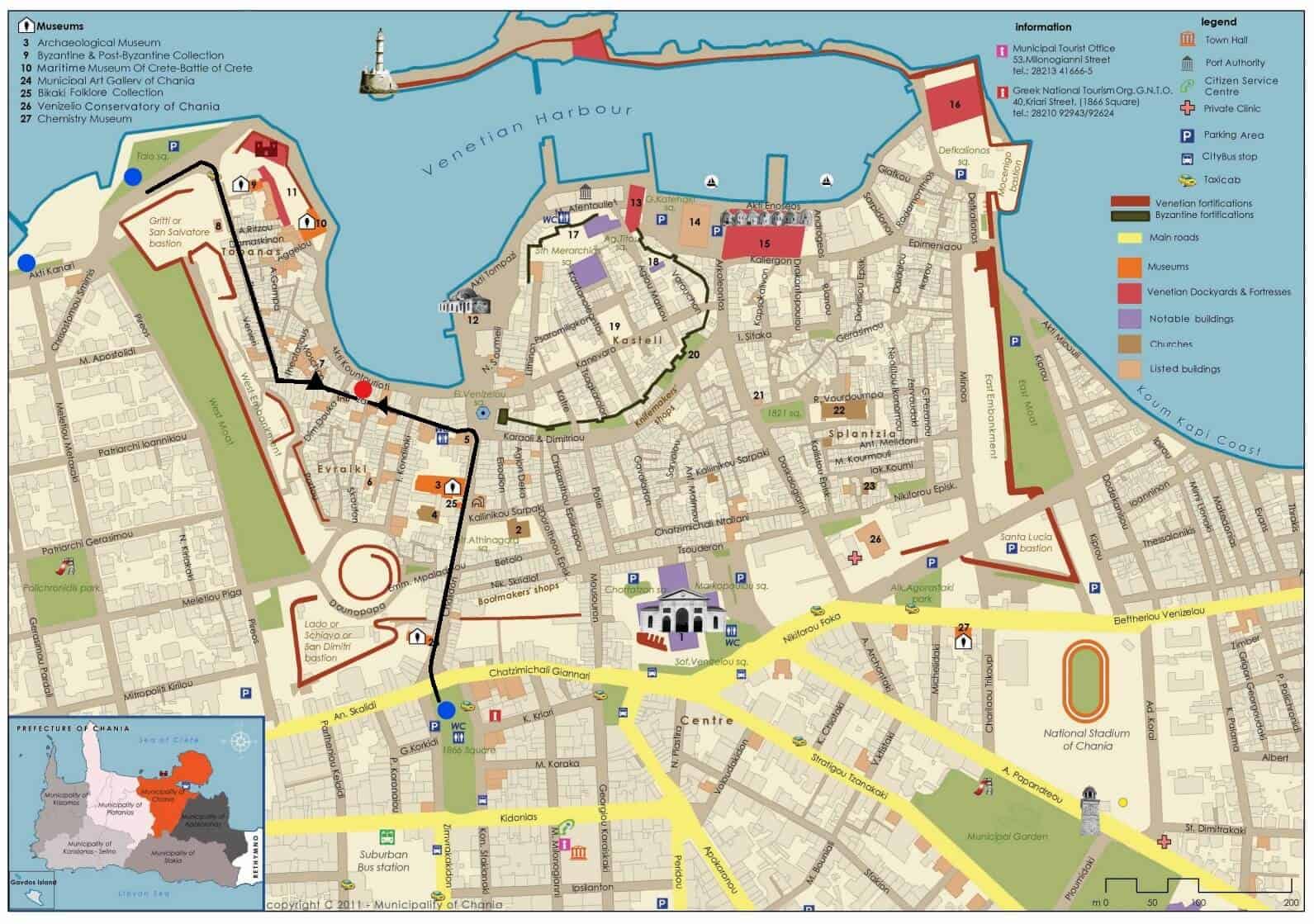
So, if you find yourself in this situation, assuming that your hotel, B&B, or short-term rental is within the walled town, consider parking your car outside the walls in a more car-friendly environment. Or, you can stay in a hotel outside the walls and park outside the walls. You are forewarned about those narrow one-way streets. We highly recommend that you ask your hotel/B&B about parking recommendations when booking. Some ancient towns have pedestrian-only roads around their historic downtowns, and parking is outside that area. This means there will be a bit of a walk from your car to the hotel. A short walk to your hotel is not a big deal (especially if you’re interested in staying in a charming ancient city), but where you need to park is worth considering.
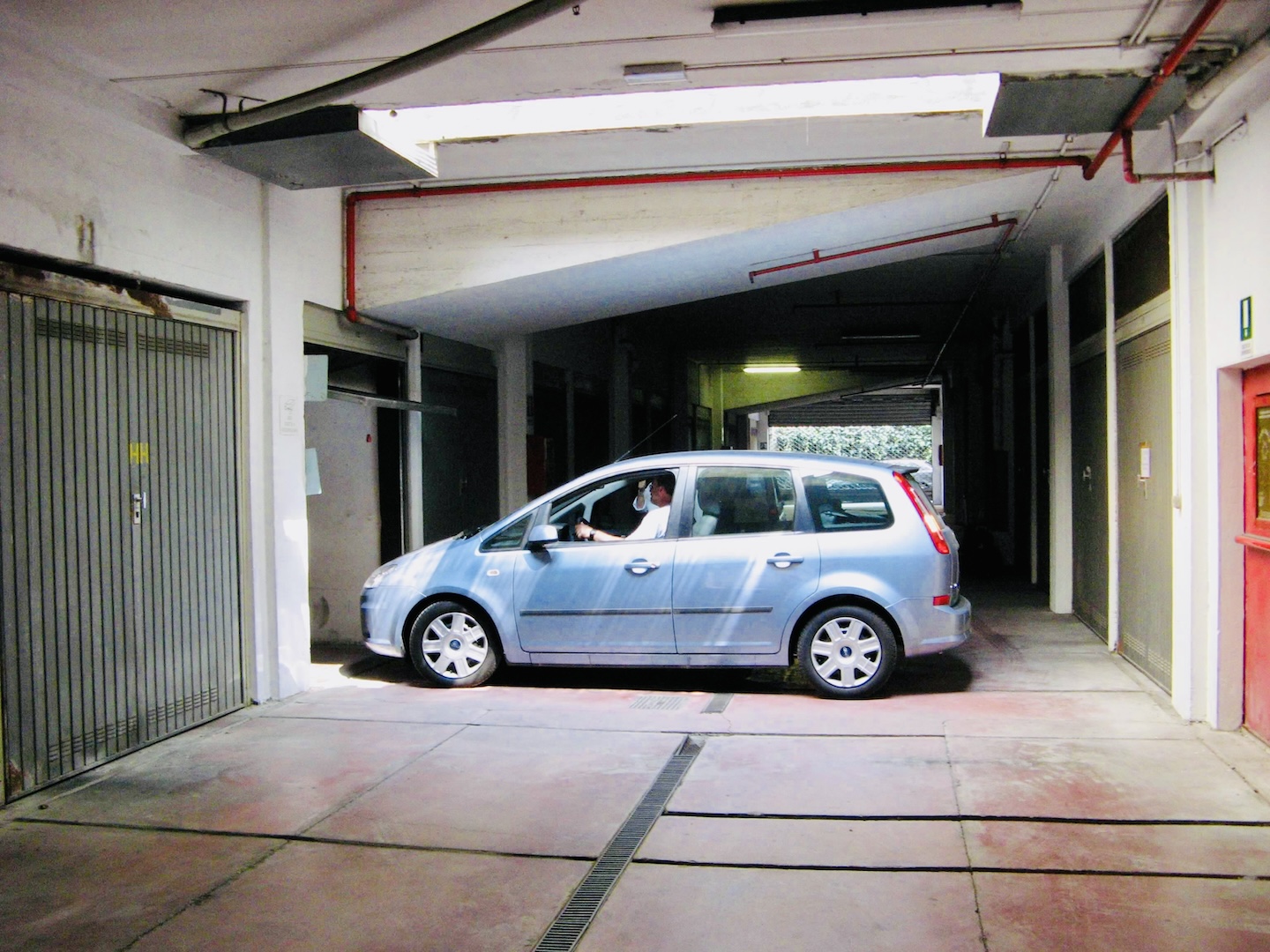
Driving in Rural European Towns
In general, rural driving is delightful. The scenery can be beautiful and sometimes spectacular — until one or both of two conditions are encountered. First, some rural roads can become incredibly narrow. As a North American male driver, I tend to sputter under my breath when encountering these very narrow roads, “How can this road be two-way?” Hedge rows, stone fences, and the like can often ruthlessly enforce the width of rural roads. These immovable boundaries on a very narrow road coupled with an oncoming vehicle (that is large enough that I can’t quickly figure out how the two of us are going to pass each other unscathed), I generally wimp out and get over as far as I can, stop, and let the other guy figure it out. Most likely, the other driver is a resident of the area and knows how to get by safely in these circumstances. Remember, discretion is the better part of valor.
Stay Alert!
Second, some hill and mountain roads lack guardrails in parts of Europe. This seems most apparent on select narrow and winding hill and mountain roads. Lolly finds this a bit unnerving, and I find it curious. What does this tell us about Europe? One is that the continent may not be as litigious as the U.S. Second, maybe European drivers are better “road course” drivers than those in the U.S. Regardless, be aware of this and please take the appropriate precautions.
Finally, this is becoming less and less of an issue, but some rural roads are not yet on GPS, and some are not named (at least in a way that mere mortal visitors can discover).
Expect the Unexpected: A Story of New Understandings
It all started with our arrival at the Florence airport a few years ago. We rented a car for our two-week exploration of Tuscany. So, the first item on the agenda after clearing immigration and customs was to pick up the car. All went well until we got in the actual rental car. Normally, I am the driver, and Lolly is the navigator. I get in the driver’s seat of the automatic transmission car we requested.
Being the highly experienced engineer that I am, I stuck the key into the ignition, put my foot on the brake, and turned the key. Nothing. Not a peep from under the hood. I started the process all over again. Again, nothing! Now, my years of engineering training kicked in. Either there is a sequence of steps beyond what I was used to requiring to start the vehicle — or it has a mechanical issue (likely, electrical). After about what seemed like an hour (but was more like ten minutes) of trying to get the car started, I gave up. Of course, Lolly was sitting quietly beside me with her usual look of support. “Must be a mechanical/electrical problem. Let’s go back in and get another car!!” I gruffly pronounced.
Respect the Younger Generation
So, we went back into the car rental office, and I described our situation to the very young clerk at the rental car desk. I then asked for another car. Now, I have socks at home that are older than this guy, yet he tells me he is going out to look at our car. So, we follow him out. All along, I am giving Lolly my “this is crazy look.” When we get to the car, he hops in and starts it right up. WHAT?!!! I bet it was all that Lolly could do not to laugh out loud (particularly given the obvious look of disbelief that must have been on my face).
The highly intelligent and mechanically inclined young man told me that this type of car had a sequence of buttons to push together while turning the key before the car started. Only native-born Italians know this secret.
Thus began our Tuscany adventure.
Related Articles
- Best Apps and Websites for Savvy Travelers
- Best Tips for Renting a Car in Europe
- Driving Tips for Greece
- Expert Tips on Traveling to Europe for More Fun, Less Stress
- France: Exploring Normandy, Brittany, Provence, and Paris
- Greece: A Guide for a Two-Week Trip
- How to Use Google Translate When Traveling
- Ireland: Exploring Dublin, Kinsale, Ring of Kerry, Cliffs of Moher
- Italy: Exploring Piedmont, Cinque Terre, Tuscany, Amalfi Coast, Pompeii, Naples, and Rome
- Travel Planning Timeline
Final Thoughts
Renting and driving a car in Europe as a tourist can elevate your overall travel experience because doing so provides more flexibility. While driving to a planned destination, you may notice a charming small town or even a restaurant or shop you want to stop at. With a rental car, you can explore unexpected places along the way. My husband and I have enjoyed these little detours on our driving journeys. That’s why we always rent a car when traveling on our own in Europe. These driving tips for Europe should help steer you in the right direction!
While planning your trip, check out our tips for renting a car in Europe. Also, we have specific suggestions for driving in Greece.
If you go into renting a car with your eyes wide open (and aware of some of the differences in other countries), you’ll be fine. Enjoy the adventure!
Comments
Feel free to share your experiences driving in Europe. Your ideas and suggestions may help fellow travelers. Thanks! 🙂

